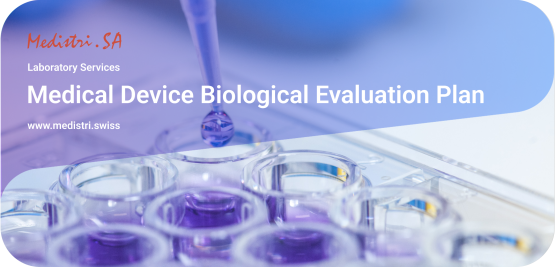(Download: Medical Device Biological Evaluation Plan in PDF by Medistri)
At Medistri, we understand the importance of ensuring the safety and efficacy of our medical devices through thorough testing and evaluation. That’s why we follow the guidelines outlined in ISO 10993–1:2018 and the FDA’s guidance document on the use of this standard, which require a structured biological evaluation plan as part of a risk management process in accordance with ISO 14971. We recognize that the complexity of biocompatibility testing and the evolving regulations can make it difficult for manufacturers to know how to classify their devices and which tests to perform.
At Medistri, we aim to address these issues by using a scientifically sound risk-based approach to determine the most appropriate testing methods for each device. This may involve a thorough evaluation of the device, including a review of the materials, written justification, and clinical history, to write a customized biological evaluation plan (BEP) specifically tailored to each device. This approach involves reviewing the available information and risks to the patient during use to select relevant tests or describe the representative test article to be used, while explaining the reasoning behind these choices.
✅ What Medistri looks at when reviewing risks: Biological Evaluation Plan:
- What is the device’s dimensions?
- What is the device’s intended use?
- What is the device’s frequency of use?
- What is the device’s patient population?
- What are the materials used?
- What is the invasiveness of the device?
- What is the duration of the device’s contact?
- Are there Drug/ Device Interactions?
- What are the risks of Biodegradation?
- What are the risks of Biodistribution?
Medistri writes the BEP to ensure the optimal testing plan for your device, in accordance with the framework provided in standard and guidance documents such as ISO 10993–1:2018 and FDA guidance on the use of ISO 10993–1 (2020). We follow clause 4.5 of ISO 10993–1:2018, which states that all known possible biological hazards should be taken into account for every material and final product, but this does not imply that testing for all possible hazards is necessary or practical. For example, chemistry testing for extractables and leachables may be performed for limited contacting medical devices where these tests may not be relevant. Additionally, cytotoxicity testing may be performed without proper testing conditions, leading to unnecessary costs and delays.
👉 In accordance with clause 7 of ISO 10993–1:2018, our team determines and documents the most appropriate testing strategy and criteria for determining the acceptability of the material for the intended purpose, based on the risk management plan and the patient’s needs. By using this risk-based approach, we are able to reduce unnecessary testing costs and delays while ensuring the safety and efficacy of our medical devices.
🎯 To learn more about Medistri’s Medical Device Biological Evaluation Plan , visit on our website at www.medistri.swiss or directly contact our team at contact@medistri.swiss.
- The Medistri Team
